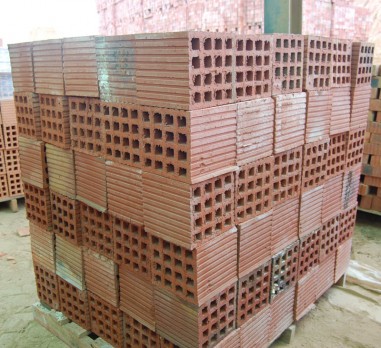Claytile redesigns for sustainability with new rotary kiln
Claytile recently revamped its entire production process. This included the replacement of its tunnel kiln with a rotary kiln and the installation of variable speed drives in factory equipment. The revamp also provided the opportunity for Claytile to reconsider its material flows and redesign its clay milling process with dematerialisation and sustainability in mind.
Replacement of the tunnel kiln with the new rotary kiln has led to lower thermal energy, electricity and maintenance requirements. The rotary kiln is more efficient at using thermal energy than the previous tunnel kiln. It also relies on the natural convection of air, requiring less fans to operate. This has led to a significant decrease in electricity use which is usually required to drive fans. Claytile also decreased its electricity use by installing energy efficient variable speed drives in its conveyer belts and other factory equipment. Maintenance requirements have been reduced because the new rotary kiln is carless.
Milling & Extrusion
At the start of the production process, clay milling operations were changed to include screening before and after crushing. The inclusion of screening before crushing eliminated the need for electricity to be used on crushing approximately 30% of the raw material that was already small enough to be used in production, leading to significant monetary savings.
Considering that Claytile’s screening is particularly fine for its multi-perforated products, the pre-screening practice would likely provide similar value to a number of brick makers. The layout of the crushing process was also improved to minimise handling and three-day souring applied to allow water to penetrate the clay better, leading to increased wetting and energy savings at extrusion as a result. This also reduced wasted raw materials and improved brick quality.
Heat recovery and ambient drying
As part of Claytile’s recent production process overhaul, the company also implemented ambient drying, heat recovery measures and installed a scrubber to drastically reduce air pollutants.
Ambient drying is used to decrease the water moisture content in extruded bricks. This reduces the amount of energy needed to remove moisture during drying, decreasing the energy required to dry and fire each brick. Although natural drying is common practice with clamp kilns, it is less common with the use of tunnel kilns where bricks are usually moved from dryer to kiln within half a day. This is because the firing energy savings from reduced brick moisture are not usually deemed enough to outweigh the kiln car expenses and space required to move and ambient dry extruded bricks.
However, Claytile was able to implement ambient drying by packing bricks on the ground inside the factory’s semi-open building structure, allowing bricks to dry for two days after extrusion before being fired in the kiln. Minimising the handling required for ambient drying and protecting the bricks from rain conditions, made it worthwhile financially to use ambient drying which reduced the water moisture in bricks from previous levels of 15% to 10%.
Claytile also reconfigured its production process to recover waste heat for reuse in drying. This included full recovery of both exhaust gas heat from brick firing and waste heat from cooling, which together provided enough energy to power the dryer. A scrubber was also installed on the factory’s only exhaust stack to capture 90% of the sulphur dioxide and particulate matter that would otherwise be expelled from the dryer exhaust into the air.
The heat recovery measures and natural air drying practice, have together led to a 40% reduction in thermal energy requirements for both drying and firing. These reductions have yielded the benefits of lower firing fuel costs and decreased air pollution.










